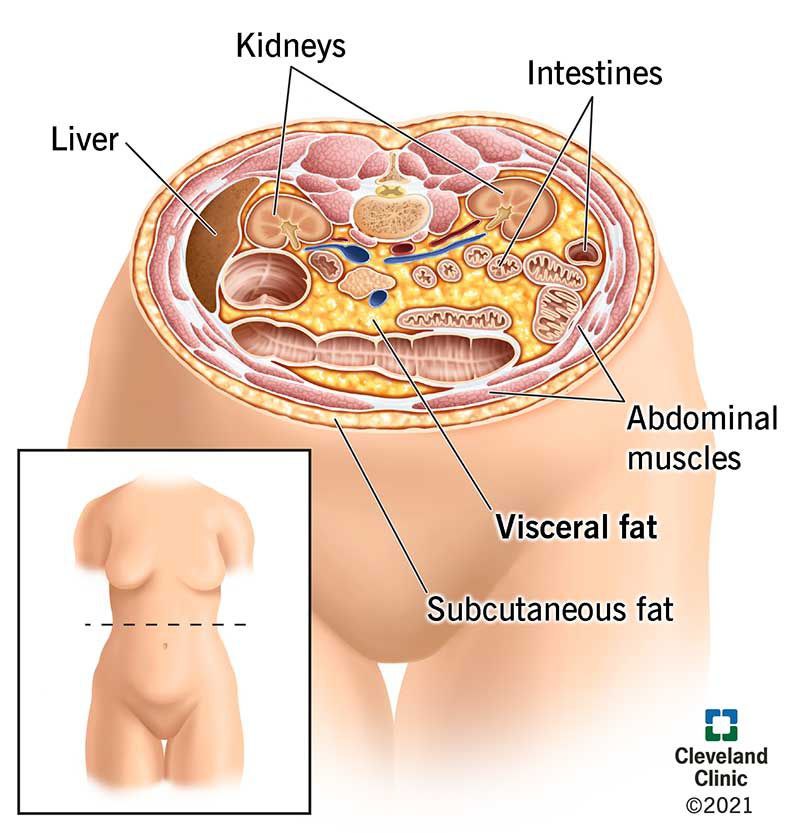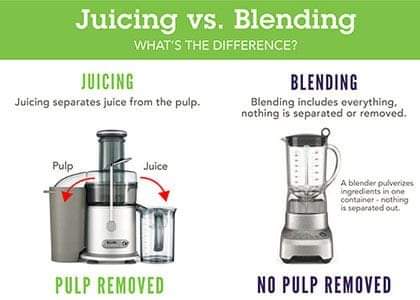“Nutritional” vs. “Healthy”: Are These Synonyms?
The words healthy and nutritional seem to go hand in hand. We often see them used to describe the same foods. For example, it makes sense that a carrot would be healthy and nutritional. But does that mean these two words mean the same thing?
Sometimes food labels can be misleading, so it makes sense to ask, what does healthy mean? What is nutritional, and are these terms synonyms? With a close examination, we can determine the scope of each word. We can have a clearer understanding of how they apply to our daily food choices, so we can make better ones.
(And just so we’re clear … we may be talking about healthy food, but that doesn’t mean we’re asking you to toss out that certain breakfast cereal with little, multi-colored marshmallows that are “magically delicious.” No judgment!)
What do healthy and nutritional mean?
First, let’s look at our own definitions of the terms. We define the word healthy as “pertaining to or characteristic of good health.” The word healthy was first recorded in 1545–55.
The word nutritional is defined as “the act or process of nourishing or of being nourished.” The word nutrition first originated in 1375–1425 from late Middle English, and it’s derived from the Latin word nūtrīre (meaning “to feed”).
But, what’s nourish? It’s supplying what is necessary for life, health, and growth.
So, nutritional and nourish pertain to what foods provide us with in the way of vitamins, minerals, and sustenance. And, interestingly enough, the word nutrition is recorded before healthy—but did nutrition influence the meaning of healthy?
Does good nutrition equal good health?
When we say health, we are pretty much referring to our bodies, the machines that run hard every day and that need maintenance and care.
When we say nutrition, we’re generally talking about the right kind of fuel to make our human-body machines run. Simple enough. It seems that good nutrition does equal good health then.
How are nutritional and healthy different?
Is sugary, marshmallow cereal nutritional? A look at the food label reveals that yes, it is nutritional. Cereals typically provide important vitamins that nourish our bodies. But is it healthy? That is where we begin to see the divide, and where it becomes clear the words healthy and nutritional are not synonyms.
If the word healthy means something that is conducive to good health, it seems wrong to label sugary cereals as nutritional and definitely inaccurate to label them as healthy. Foods loaded with sugar are not healthy.
But, what about superfoods? Is this just a way of rebranding some pretty humble foods like blueberries, walnuts, salmon, and sweet potatoes to boost sales? Maybe. But, that doesn’t mean it’s a bad thing. These foods used to be staples of the American diet but have fallen out of popularity over the years with the rise of processed and fast foods. However, with the new superfood status, the popularity of truly nutritional foods is on the rise again. These foods deserve the healthy and nutritional labels.
What happens when we drown kale in brown sugar (and sesame, yum) though? Is it a nutritional and healthy food? The kale may not lose its nutritional value, if cooked properly, but the healthy aspect is now jeopardized by the addition of sugar. Most nutritionists agree that sugar is a fairly evil force in the food world that can taint even the healthiest superfood. And, while eating kale drowned in brown sugar may not be as bad for you as those sugary marshmallows, it’s definitely not considered healthy anymore.
Similarly, acai berry is a superfood, but it loses it high nutritional value when it’s turned into juice with high levels of added sugar. Green tea has very high levels of antioxidants, but falls on the wrong side of healthy when it’s processed with less healthy teas and served with sugar. Some whole grains are processed to a degree that causes them to lose their nutritional value or prompts the body to process them in a way that spikes sugar levels.
So, perhaps the best thing to remember when shopping for (good) nutritional and healthy food is that you can take a perfectly nutritious food and turn it into something that has a less positive, or healthy, effect on your body. If you process it in a certain way, overcook it, or add enough sugar (or cute little marshmallows), it won’t be healthy at all.
What does nutritional labeling tell us?
Sometimes, in a moment of utter hunger, we may look at the label of a pre-packaged snack food and see that it’s under 200 calories with only a few grams of fat. Yes, it has a bunch of sodium and added sugar (how much is too much?), and a bunch of other things we’re not sure about. But, it seems slightly healthy (and it says “low fat” in a green banner), so down the hatch it goes.
The way your body breaks down that processed food—and its list of mystery ingredients—is quite different from the way your body would process, say, an apple and a handful of nuts. These are whole foods (see where that supermarket chain got the name?), which are always more healthy and nutritional than anything processed and pre-packaged. Your body breaks down whole foods slowly throughout the day, allowing those nutrients to do their job, giving you more energy, and keeping you full and fueled.
Nutritional labeling is important, and an important part of it is the ingredients list. The fewer the ingredients (and the fewer mystery ingredients), the better. The ingredients list for a crisp, juicy apple is: apple. That’s the best kind of list.
The Food and Drug Administration (FDA) has good information on its web site about reading these labels. They advise that the most important things are the serving size (beware that some packages are considered two servings, when you might think of it as one), the nutrition info (fiber, sugar, salt, fat, etc.), and the percentage of “daily value” (you want a high daily value of the nutrients that are good for you, like calcium, and a low daily value of the nutrients that aren’t so good, such as saturated fat).
The power of words
That said, even the FDA revises its standards frequently for what it deems “healthy foods,” as they did recently to consider “added” sugars vs. “naturally occurring” sugars. Now, all sugars are not equal.
The science of nutrition is a fluid one and keeping up takes some work. Understanding the nomenclature is helpful, as is knowing that healthy is a state of being, and that good nutrition is what gets you there.
But, beware of catchy marketing and claims to be part of a “balanced” meal, because without the nutritional info to back it up, those claims are just food clickbait.
Copyright 2024, XAKKHRA, All Rights Reserved.
“Nutritional” vs. “Healthy”: Are These Synonyms?
The words healthy and nutritional seem to go hand in hand. We often see them used to describe the same foods. For example, it makes sense that a carrot would be healthy and nutritional. But does that mean these two words mean the same thing?
Sometimes food labels can be misleading, so it makes sense to ask, what does healthy mean? What is nutritional, and are these terms synonyms? With a close examination, we can determine the scope of each word. We can have a clearer understanding of how they apply to our daily food choices, so we can make better ones.
(And just so we’re clear … we may be talking about healthy food, but that doesn’t mean we’re asking you to toss out that certain breakfast cereal with little, multi-colored marshmallows that are “magically delicious.” No judgment!)
What do healthy and nutritional mean?
First, let’s look at our own definitions of the terms. We define the word healthy as “pertaining to or characteristic of good health.” The word healthy was first recorded in 1545–55.
The word nutritional is defined as “the act or process of nourishing or of being nourished.” The word nutrition first originated in 1375–1425 from late Middle English, and it’s derived from the Latin word nūtrīre (meaning “to feed”).
But, what’s nourish? It’s supplying what is necessary for life, health, and growth.
So, nutritional and nourish pertain to what foods provide us with in the way of vitamins, minerals, and sustenance. And, interestingly enough, the word nutrition is recorded before healthy—but did nutrition influence the meaning of healthy?
Does good nutrition equal good health?
When we say health, we are pretty much referring to our bodies, the machines that run hard every day and that need maintenance and care.
When we say nutrition, we’re generally talking about the right kind of fuel to make our human-body machines run. Simple enough. It seems that good nutrition does equal good health then.
How are nutritional and healthy different?
Is sugary, marshmallow cereal nutritional? A look at the food label reveals that yes, it is nutritional. Cereals typically provide important vitamins that nourish our bodies. But is it healthy? That is where we begin to see the divide, and where it becomes clear the words healthy and nutritional are not synonyms.
If the word healthy means something that is conducive to good health, it seems wrong to label sugary cereals as nutritional and definitely inaccurate to label them as healthy. Foods loaded with sugar are not healthy.
But, what about superfoods? Is this just a way of rebranding some pretty humble foods like blueberries, walnuts, salmon, and sweet potatoes to boost sales? Maybe. But, that doesn’t mean it’s a bad thing. These foods used to be staples of the American diet but have fallen out of popularity over the years with the rise of processed and fast foods. However, with the new superfood status, the popularity of truly nutritional foods is on the rise again. These foods deserve the healthy and nutritional labels.
What happens when we drown kale in brown sugar (and sesame, yum) though? Is it a nutritional and healthy food? The kale may not lose its nutritional value, if cooked properly, but the healthy aspect is now jeopardized by the addition of sugar. Most nutritionists agree that sugar is a fairly evil force in the food world that can taint even the healthiest superfood. And, while eating kale drowned in brown sugar may not be as bad for you as those sugary marshmallows, it’s definitely not considered healthy anymore.
Similarly, acai berry is a superfood, but it loses it high nutritional value when it’s turned into juice with high levels of added sugar. Green tea has very high levels of antioxidants, but falls on the wrong side of healthy when it’s processed with less healthy teas and served with sugar. Some whole grains are processed to a degree that causes them to lose their nutritional value or prompts the body to process them in a way that spikes sugar levels.
So, perhaps the best thing to remember when shopping for (good) nutritional and healthy food is that you can take a perfectly nutritious food and turn it into something that has a less positive, or healthy, effect on your body. If you process it in a certain way, overcook it, or add enough sugar (or cute little marshmallows), it won’t be healthy at all.
What does nutritional labeling tell us?
Sometimes, in a moment of utter hunger, we may look at the label of a pre-packaged snack food and see that it’s under 200 calories with only a few grams of fat. Yes, it has a bunch of sodium and added sugar (how much is too much?), and a bunch of other things we’re not sure about. But, it seems slightly healthy (and it says “low fat” in a green banner), so down the hatch it goes.
The way your body breaks down that processed food—and its list of mystery ingredients—is quite different from the way your body would process, say, an apple and a handful of nuts. These are whole foods (see where that supermarket chain got the name?), which are always more healthy and nutritional than anything processed and pre-packaged. Your body breaks down whole foods slowly throughout the day, allowing those nutrients to do their job, giving you more energy, and keeping you full and fueled.
Nutritional labeling is important, and an important part of it is the ingredients list. The fewer the ingredients (and the fewer mystery ingredients), the better. The ingredients list for a crisp, juicy apple is: apple. That’s the best kind of list.
The Food and Drug Administration (FDA) has good information on its web site about reading these labels. They advise that the most important things are the serving size (beware that some packages are considered two servings, when you might think of it as one), the nutrition info (fiber, sugar, salt, fat, etc.), and the percentage of “daily value” (you want a high daily value of the nutrients that are good for you, like calcium, and a low daily value of the nutrients that aren’t so good, such as saturated fat).
The power of words
That said, even the FDA revises its standards frequently for what it deems “healthy foods,” as they did recently to consider “added” sugars vs. “naturally occurring” sugars. Now, all sugars are not equal.
The science of nutrition is a fluid one and keeping up takes some work. Understanding the nomenclature is helpful, as is knowing that healthy is a state of being, and that good nutrition is what gets you there.
But, beware of catchy marketing and claims to be part of a “balanced” meal, because without the nutritional info to back it up, those claims are just food clickbait.
Copyright 2024, XAKKHRA, All Rights Reserved.












